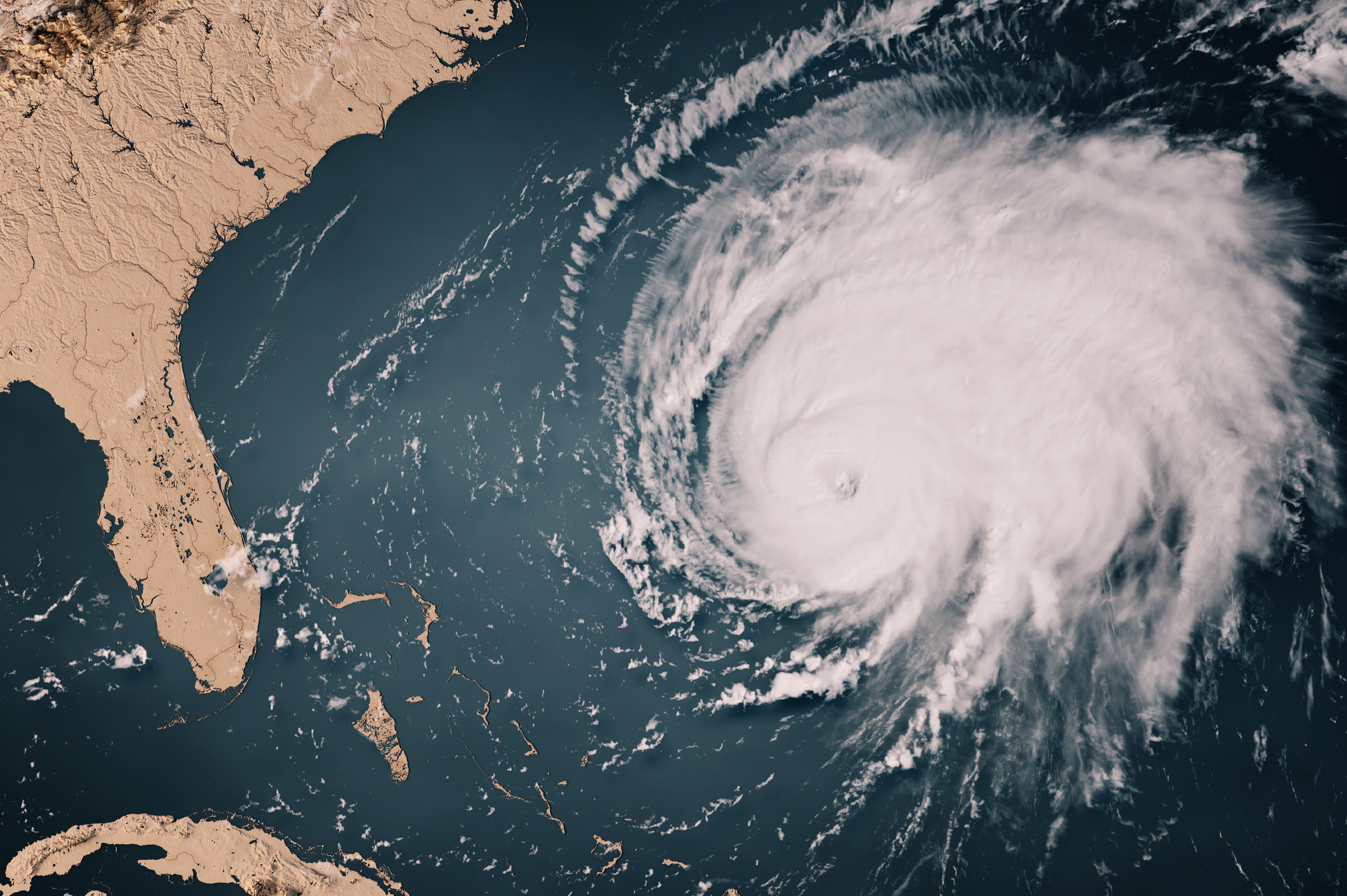Balancing Act of Hurricane Season Sways With Climate Change

3D Render of Category 4 Major Hurricane Fiona east of Florida. Getty Images.
Hurricane season is underway and runs through Nov. 30. While the National Oceanic and Atmospheric Administration is forecasting a “near-normal” 2023, experts say that climate change paints a more unpredictable picture for the future.
Behind the 2023 projections is a balancing act of rising oceanic temperatures and the onset of the climate phenomenon El Niño, explains Susan Lozier, dean and Betsy Middleton and John Clark Sutherland Chair in the College of Sciences. The waters of the tropical Atlantic Ocean are currently 1 – 3°C above average, which would typically signify the potential for more intense activity, but the wind shear associated with El Niño acts as a deterrent for hurricane formation.
Increasing Intensity
But what could happen when the shield of El Niño isn't present to counteract the rising temperatures in the tropical Atlantic?
"Climate change is leading to warmer surface temperatures. We know that will lead to more intense hurricanes, but we don't know if it will necessarily lead to more hurricanes. As climate change progresses, we are interested in understanding how weather patterns will be disrupted, including those related to hurricane formation and pathways," said Lozier, who recently served as president of the American Geophysical Union.
She further explained that the increased intensity is a result of the warm waters releasing additional energy into the storm as it forms. This consequence of climate change could present problems for the Tech campus and the city of Atlanta due to the risk of torrential rainfall. According to the National Weather Service, flooding has proven to be the deadliest hazard associated with hurricanes over the past decade.
"When people think about hurricanes, they generally think about damaging winds. Winds are damaging, but increasingly, the most damaging part of a hurricane is the immense amount of moisture they carry," Lozier said, reflecting on the 2017 landfall of Hurricane Harvey. "An area like Atlanta could be affected by heavy rainfall associated with the path of a hurricane. The winds will have mostly died down by the time a storm reaches Atlanta, but as the climate warms, warmer air holds more moisture, and because of that, the expectation is that there will be more rainfall associated with hurricanes and tropical storms.”
Beyond Reducing Carbon Emissions
Fueling the rising temperatures in the world's oceans is an increase in carbon emissions, and simply curtailing them may not be a solution.
"The private and public sectors are increasingly looking at actively removing carbon from the atmosphere because we are unlikely to limit global warming simply by curtailing emissions. Active carbon drawdown from the atmosphere and the ocean are active areas of research right now,” Lozier said.
Tech researchers are at the forefront of this effort, highlighted by a partnership between the Institute, the Georgia Aquarium, and Ocean Visions — the Center for Ocean-Climate Solutions. Lozier represents the Institute as a partnership lead at the center, where the primary focus is the design and delivery of scalable and equitable ocean-based solutions to reduce the effects of climate change and build climate-resilient marine ecosystems and coastal communities.
Associate Professor Chris Reinhard is exploring how coastal ecosystem restoration can permanently capture carbon dioxide from the atmosphere as it becomes buried in sediments on the seafloor. The overall process of removing carbon from the air can be costly. To combat that, a team of researchers in the School of Chemical and Biomolecular Engineering is developing a traditional direct air capture system that is cheaper to operate and more efficient. Helping to craft policy and research climate solutions, Marilyn Brown, Regents’ Professor and the Brook Byers Professor of Sustainable Systems in the School of Public Policy, serves on the leadership council of Drawdown Georgia.
A certain level of unpredictability will always exist when dealing with natural disasters, but understanding humans’ role in controlling climate change could be a key factor in our ability to accurately assess the threat of developing storms.